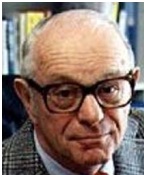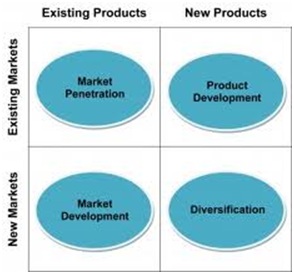|
 |
|
 |
|
|
||
Igor Ansoff (1918-2002)
American expert on strategy (pictured right) whose textbook, Corporate Strategy, was very influential (see below).
Key book
Corporate Strategy (1st edition, 1965) A successful company does five things extremely well:
1. Defines and achieves its strategic objectives Gap analysis is required where you attempt to find a strategy that fills the gap between
2. Chooses a strategy that creates “synergy” Synergy leads to a strategy's results being greater than the resources spent on it (often described as 2+2=5).
3. Exploits market opportunities and organizational strengths, whilst minimizing the impact of the organization's weaknesses and external threats (e.g. competition).
4. Achieves product differentiation This makes products distinctly superior to competitors.
5. Chooses one of four product-market strategies
The product-market matrix (now often known as Ansoff's box - see above) shows four possible product-market strategies:
But an over-emphasis on strategic planning can slow down decision making (“paralysis by analysis”).
Market change is the biggest influence on strategy and there are two possible responses to it:
1. Reactive - in response to market changes, improving:
2. Proactive - improvements based on anticipating future market changes (this becomes more necessary as change increases).
There are four ways to manage change (the first two are quick but provoke great employee resistance):
1. Coercive Forcing change.
2. Crisis Changing when the organization's survival is threatened.
3. Adaptive (small, incremental change) This is slow but minimizes employee resistance.
4. Managed resistance This is also known as the “accordion method”, because it becomes
This is best when the urgency isn't great enough to require coercion or crisis management.
To minimize resistance employees should be involved in making changes.
Key quotes on strategy Paralysis by analysis. Strategic management is...assessing where you can be and deciding what you want to be. |
|
|
||
|
|
||
| Copyright © wisdomtowin.com 2025 All Rights Reserved | ||
|




